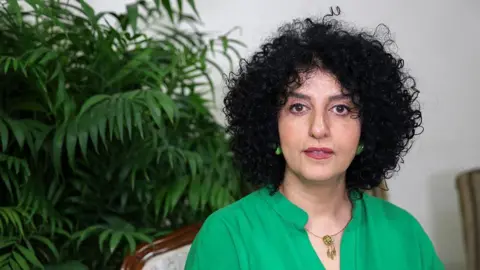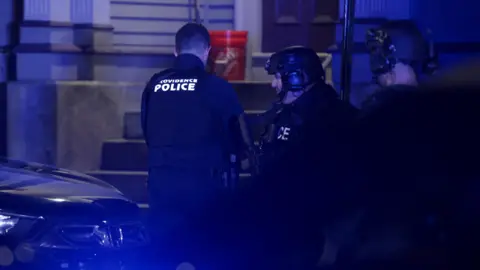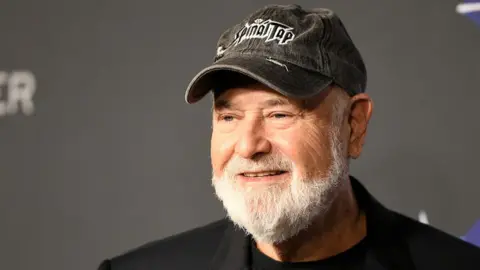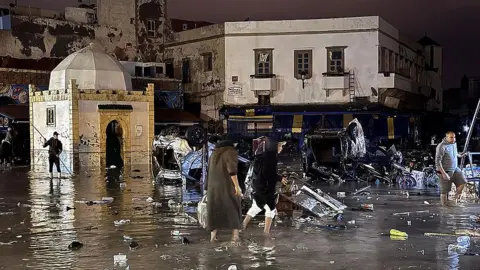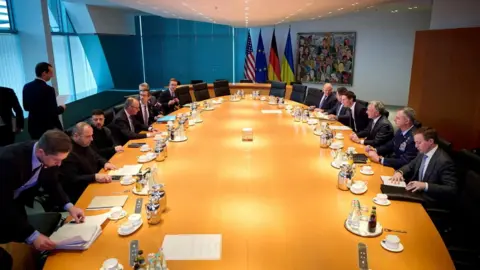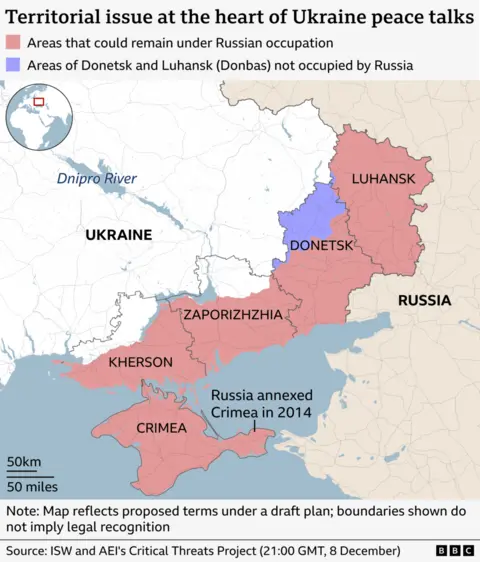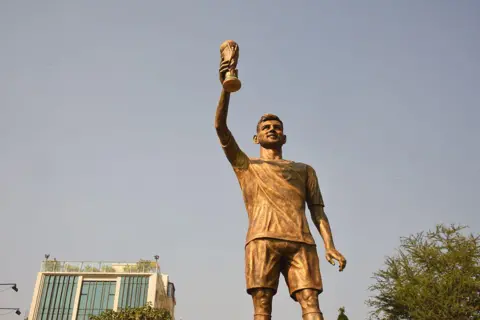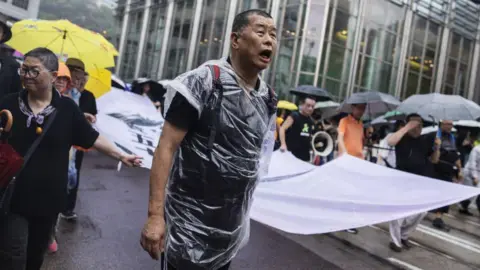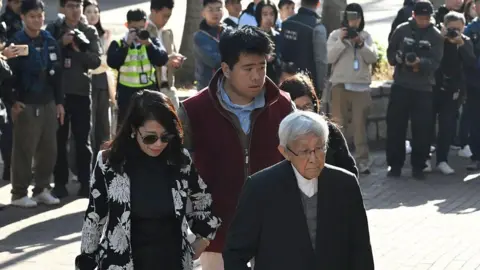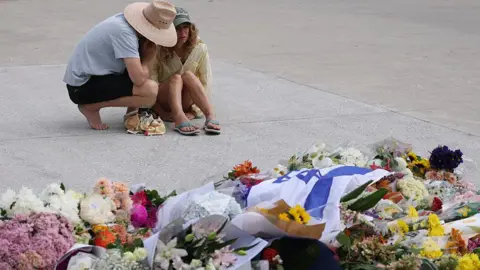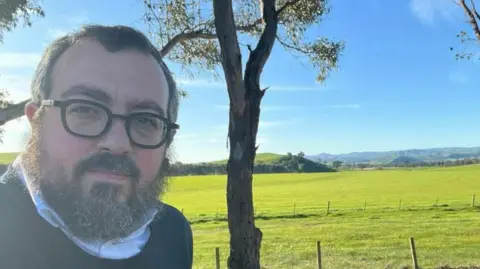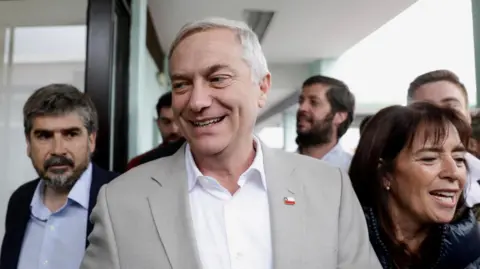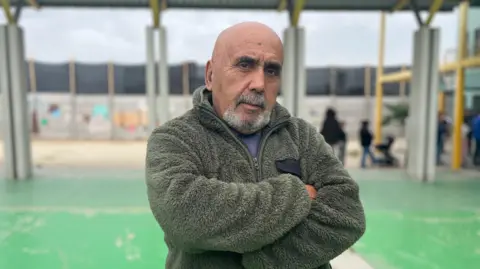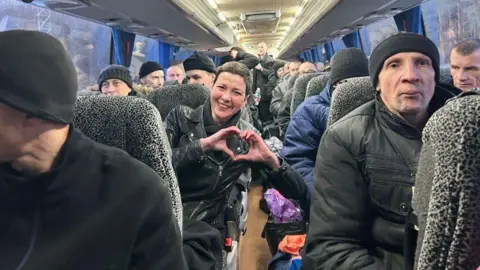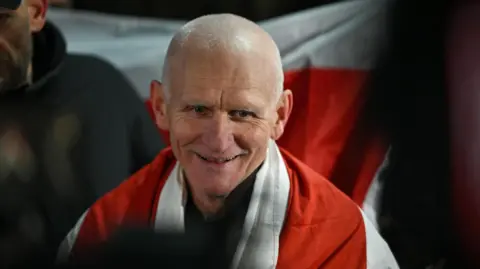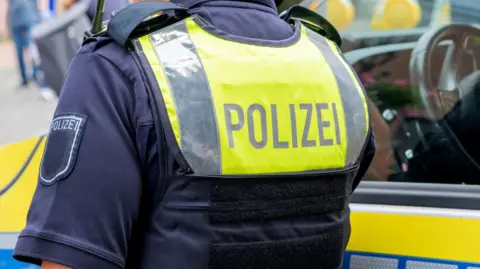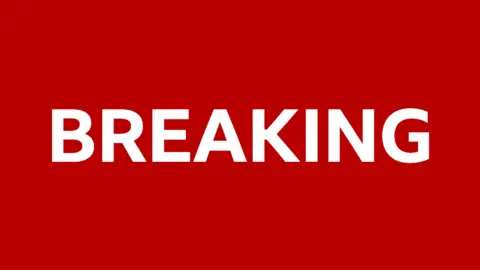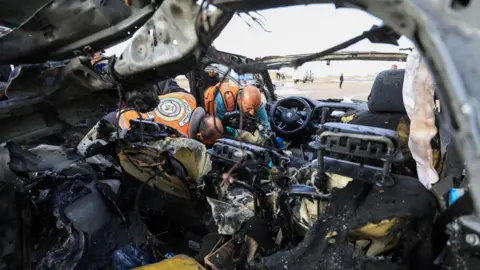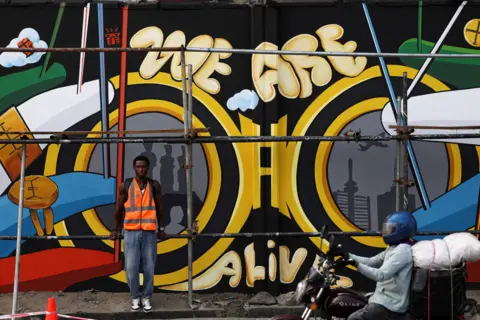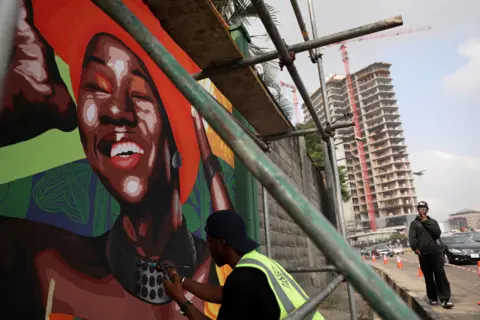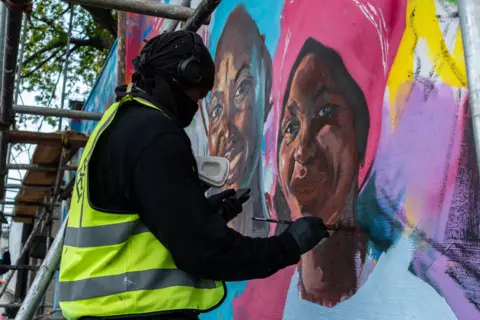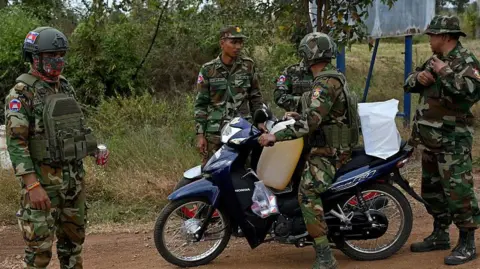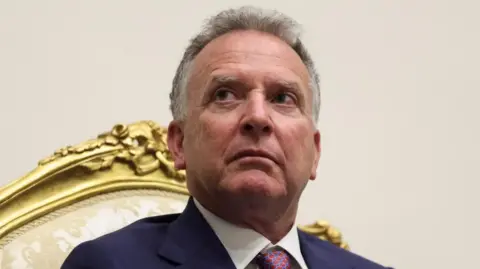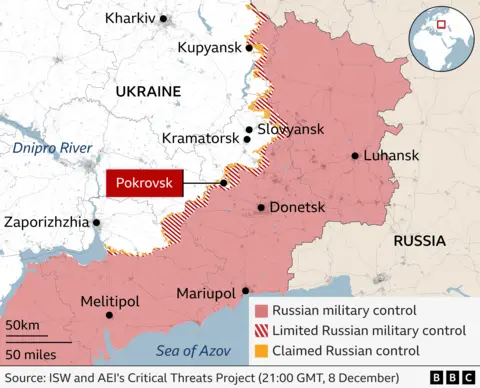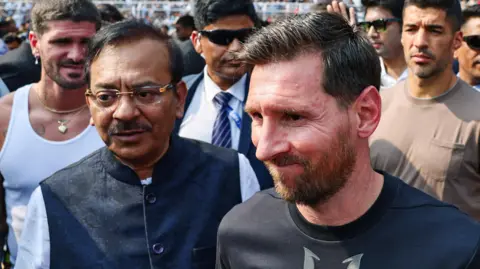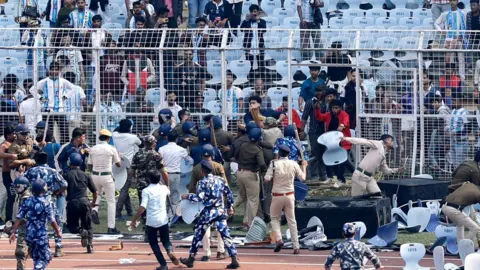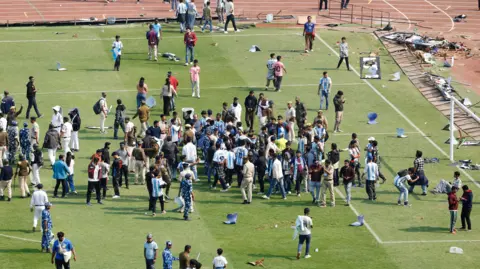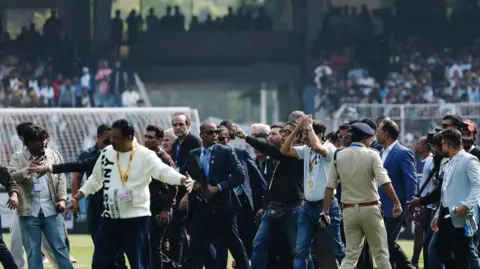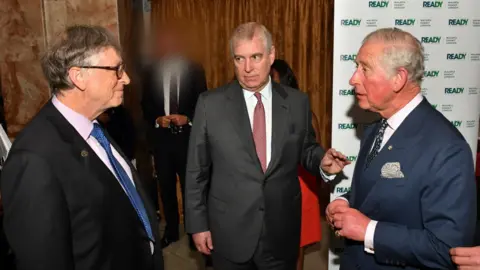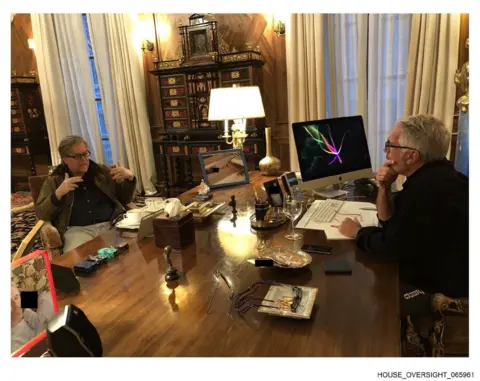How Bondi's Hanukkah festival turned from joy to horror within minutes
It was a night that promised to bring "joy and light" to Sydney's iconic Bondi Beach as crowds of Jewish families gathered at a park to celebrate the first night of Hanukkah, also known as the festival of light.
They were among thousands of other swimmers, surfers and sunbathers who had flocked to Australia's most famous beach on a scorching summer's afternoon.
But not long after the Hanukkah event kicked off at 17:00 local time and the first free donuts were doled out, festive music was drowned out by the sounds of screams and the echo of gunshots.
It's unclear exactly when the first shot was fired, but the initial call to police was made at 18:47. In the minutes that followed, two gunmen would kill at least 15 people, and injure dozens more, authorities said.
A local high school teacher, Chavi, told the BBC she dropped to the ground to protect her baby as "bullets were flying above us".
"It was pandemonium and chaos," another attendee, who identified himself as Barry, said as he described watching a throng of people trying to escape the scene that had suddenly devolved into a nightmare.

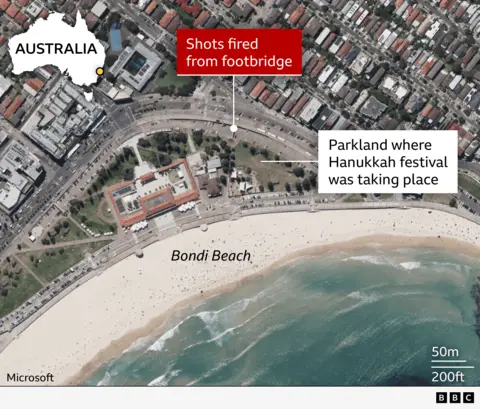
In one video verified by the BBC, upbeat music from the Hanukkah event can still be heard in the background as people crouch down and shots are heard, interspersed between shrieks.
The eerily jubilant music continues playing while the camera pans over the grass, revealing prostrate bodies completely still, their condition unclear.
Separate footage shows groups of people lying atop one another on the grass, as one woman tries to cover a young child's head with her hand.
Panic soon spread from the park to the sand, where videos show terrified beach goers sprinting away from the gunfire.
Screams, honking car horns and ambulance sirens fill the air in the next chaotic minutes. Some cars crashed as people desperately tried to get away, witnesses have told the BBC.
A nearly 11-minute video, verified by the BBC, provides perhaps the clearest timeline of the attack - though it is unclear exactly how far into it the recording started.
It begins as the two gunmen make their way across Campbell Parade - the long stretch of road, lined with cafes, that curves around the beach - and onto a pedestrian bridge above the park where the Hannukah event was taking place.
It is from there that two men - named as Sajid Akram, 50, and his son Naveed, 24 - allegedly use the elevated position to carry out the remainder of the attack, using what an expert told the BBC were "two sporting shotguns".
One man, believed to be Naveed Akram, remains on the bridge, while the other makes his way towards the park on foot. Shots continue to echo at one-second intervals in some of the footage, while people can be heard screaming.
As the older man, believed to be Sajid Akram, begins to move away from the bridge, he starts firing at people.

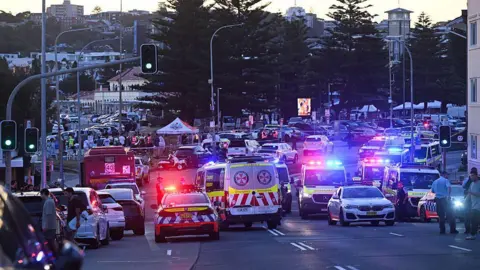 Fairfax Media
Fairfax MediaJust a few minutes later, a passerby - who is seen crouching behind parked cars - catches Sajid off guard and is able to wrestle the firearm off him within a few seconds.
The gunman stumbles away, and the man, who has been identified as Ahmed al Ahmed, points the firearm at him, before laying the weapon down against a tree and putting his hands up to signal to officers that he is not the suspect.
Ahmed, who was shot twice during the attack, has been hailed as a hero and credited by New South Wales Premier Chris Minns for saving "countless lives" with his brave actions.
Less than a minute after being disarmed, however, Sajid Akram returns to the bridge and resumes shooting at people with another weapon.
The shooting stops about two minutes later when it appears both men are hit by police fire.
About seven-and-a-half minutes into the clip, police arrive at the bridge where they are confronted with a highly charged scene - two men with gunshot wounds - the alleged gunmen - and a crowd of bystanders, some of whom appear to kick the men on the ground.
Police later confirmed that one of the gunmen, Sajid Akram, was found dead at the scene, while the other was critically wounded and taken to hospital, where he remains.

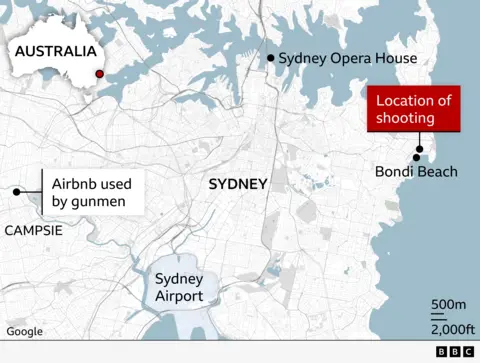
Police say both men lived about an hour's drive from Bondi Beach at a house in Bonnyrigg, a suburb in Sydney's west.
Days before the attack, however, they had decamped to a short-term rental in Campsie - about 30 minutes closer to the beach, media reports said.
Their family home in Bonnyrigg has become one of the main focuses of the police investigation. Officers raided it on Sunday night.
Footage of the raid shows three people coming out of it with their hands up, while heavily armed police officers in tactical gear surrounded the perimeter.
Those people were arrested, but have since been released without charge.

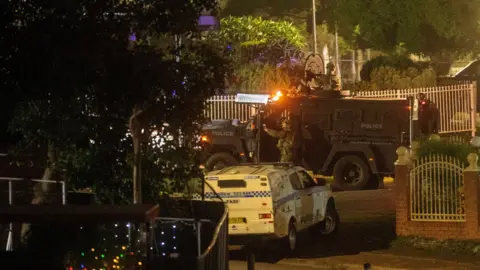 EPA
EPAIt is still unclear if the guns used in the attack were owned by the two men, but Sajid Akram owned six registered firearms and held a recreational gun license.
His son, Naveed, was examined over his close ties to a Sydney-based Islamic State (IS) cell after authorities became aware of his activity in 2019, the ABC reported.
But Australian Prime Minister Anthony Albanese said an "assessment was made that there was no indication of any ongoing threat or threat of him engaging in violence".
Residents on the otherwise quiet, suburban street have described how the tumult of the last 48 hours has unsettled the neighbourhood.
"My daughter was yelling at me, 'mum look outside' and I saw lots of police, lots of cars, sirens and loudspeakers calling them to come out," Lemanatua Fatu, who lives opposite the men, told the BBC.
"Then I saw the news - I thought oh my goodness, it can't be them."
Additional reporting by Gabriela Pomeroy and Thomas Spencer
